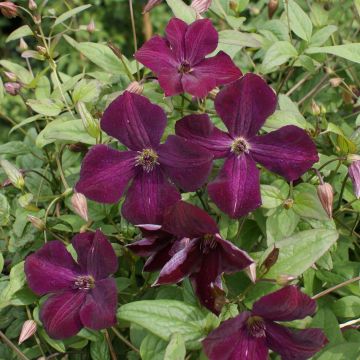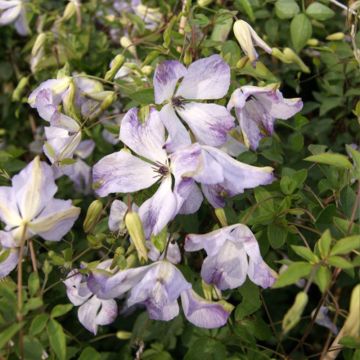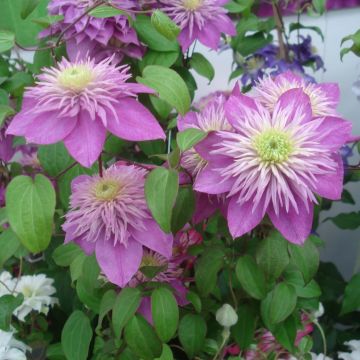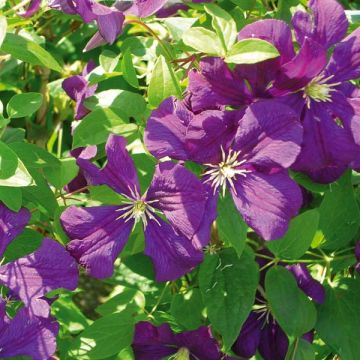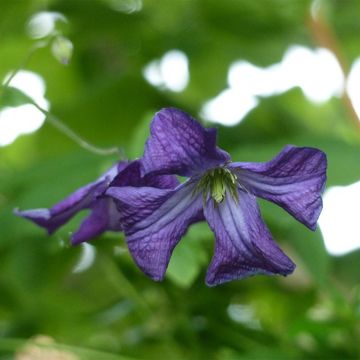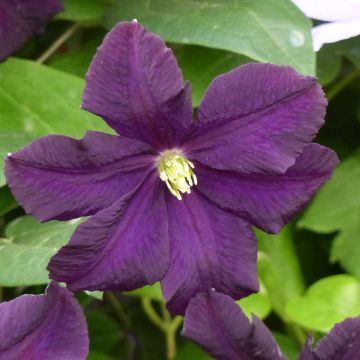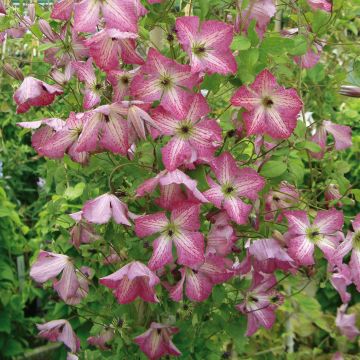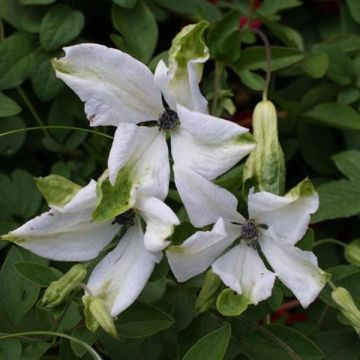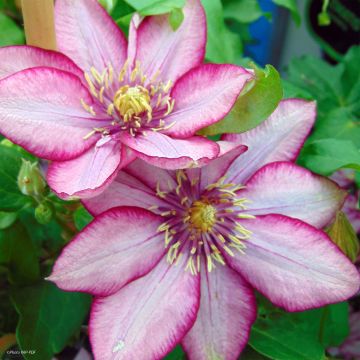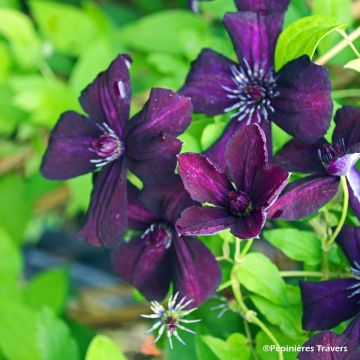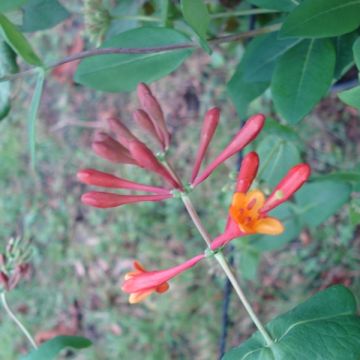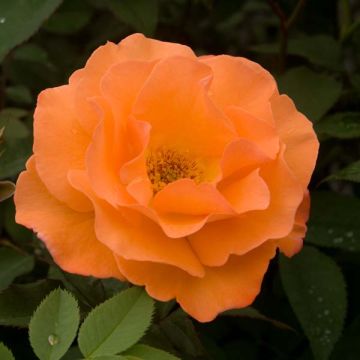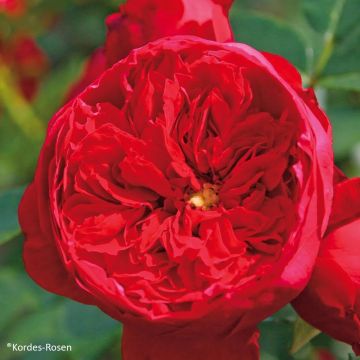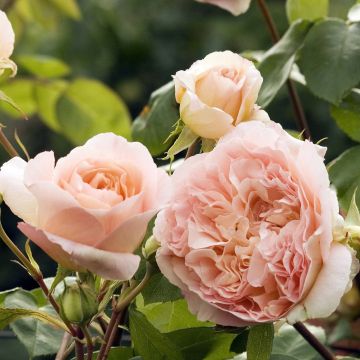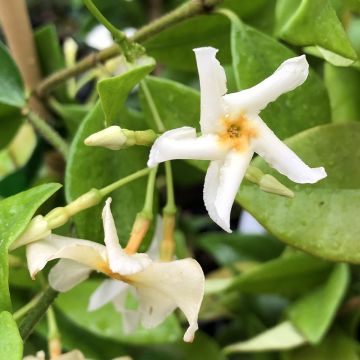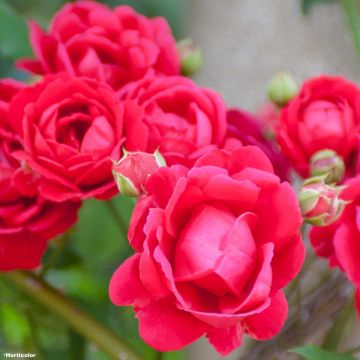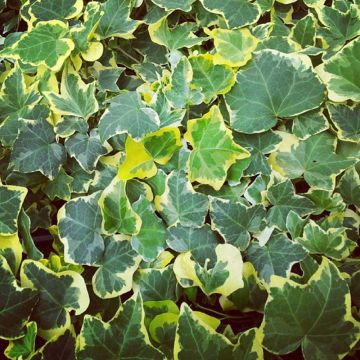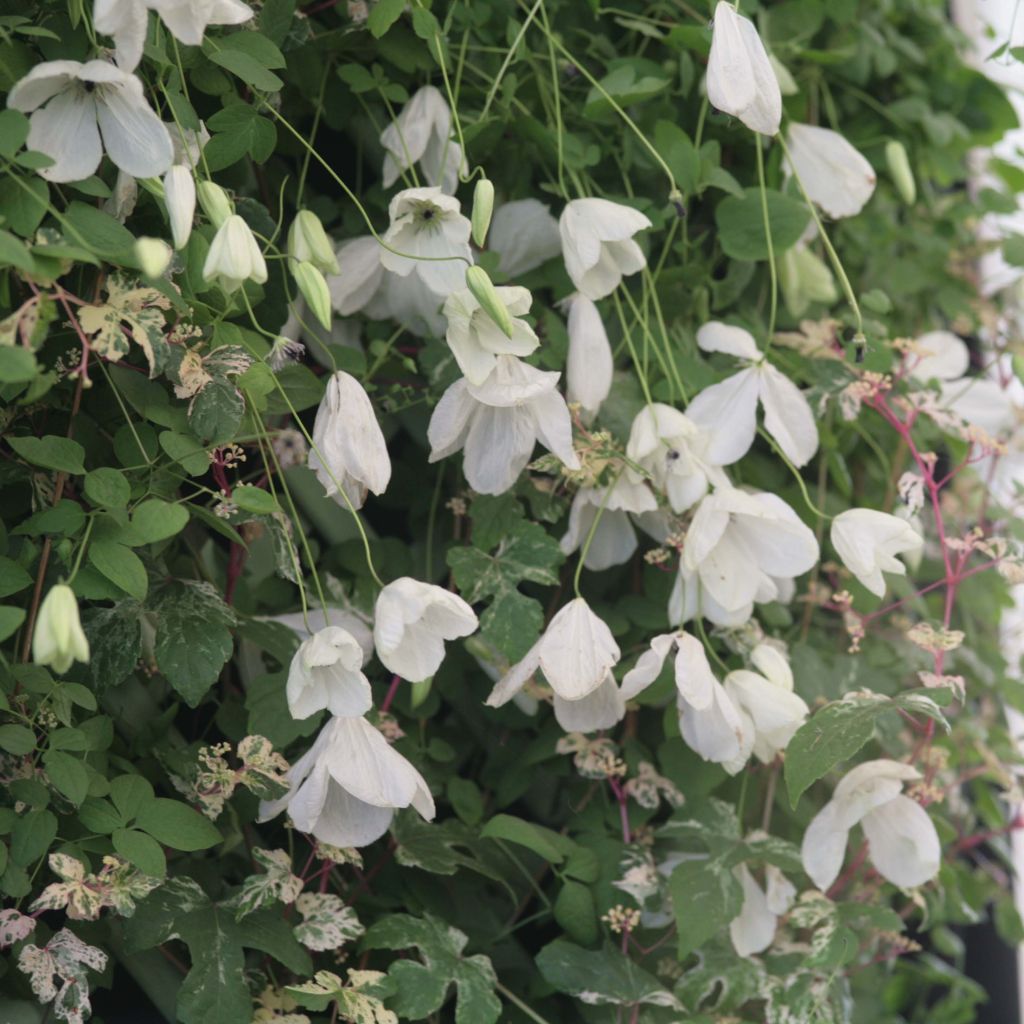

Clematis Maria Cornelia
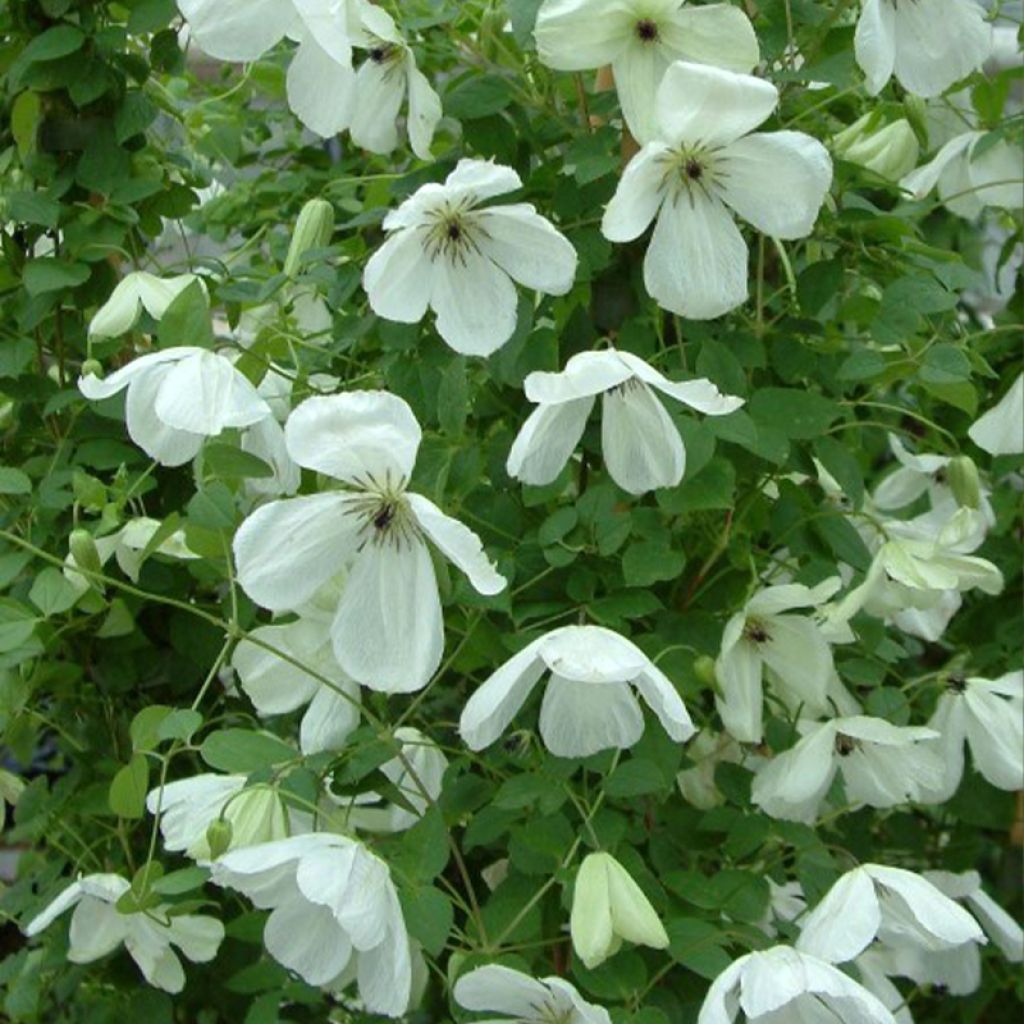

Clématite - Clematis viticella Maria Cornelia
Clematis Maria Cornelia
Clematis x viticella Maria Cornelia
Italian Leather Flower, Purple Clematis, Virgin's Bower
She had lost some of the substrate during transportation despite the bag that contained it and the packing, so I immediately planted it in a very deep pot this time instead of directly in the ground as usual. Hopefully, I will have more success this way!
Mi, 09/01/2025
This item cannot be shipped to the selected country
Delivery charge from €5.90
More information
Schedule delivery date,
and select date in basket
This plant carries a 6 months recovery warranty
More information
We guarantee the quality of our plants for a full growing cycle, and will replace at our expense any plant that fails to recover under normal climatic and planting conditions.
From €5.90 for pickup delivery and €6.90 for home delivery
Express home delivery from €8.90.

Does this plant fit my garden?
Set up your Plantfit profile →
Description
Clematis 'Maria Cornelia' is a relatively recent German selection derived from Clematis viticella, from which it inherits robustness and a long summer flowering period. 'Maria Cornelia' flowers are single, of good size for a clematis of this type, beautifully bright, and abundantly produced throughout the summer. Their refined colour, white shaded with cream and tinged with purple-violet, and their slightly wavy texture work well in gently sunny areas or part shade. This small climber is easy to grow and its moderate size is well suited for small gardens. It is also a very pretty variety to grow in a container on the terrace.
Clematis belong to the Ranunculaceae family. They are found in Europe, the Himalayas, China, Australia and North and Central America. 'Maria Cornelia' was selected in Germany in 2011 and presented for competition at the Plantarium in Boskoop (Netherlands) in 2019. It descends from Clematis viticella, native to Southern Europe, known for its natural resistance to clematis wilt. It is a perennial, semi-woody, climbing herbaceous plant, which will reach an average height of 3.20 m (10ft), with a minimum spread of 1.25 m (4ft). This clematis bears fully open flowers, up to 8 cm (3in) in diameter, on the current year's shoots in successive waves from June to the end of summer. The flowers are solitary or grouped in small clusters. When they first appear, barely open and pointing downwards, they are a creamy greenish colour. As the flower matures, it straightens up and turns outward, revealing 4 petals that have become almost white, marked by a cream-coloured midline. The dark centre of the flower adds to its charm and the dark violet tips of the stamens beautifully highlight the whiteness of the flowers. The smooth leaves are divided into 3 elliptical to lanceolate, olive green leaflets. The foliage dries up and dies in winter. This clematis clings to support or host plants through petioles that have transformed into tendrils.
Plant your clematis alongside climbing roses ('New Dawn', 'Pomponella', 'Bouquet Parfait'), to extend the flowering of your walls and pergolas until the end of summer. It is a diverse genus with flowers available in all colours, shapes, and sizes. Take advantage of their ease of cultivation to give your garden a romantic and bohemian touch. 'Maria Cornelia' will pair well with the pink flowers of other small clematis, 'Patricia Ann Fretwell' or 'Little Mermaid' for example, to climb a fence or cover a wall exposed to the morning sun.
Tips: Avoid excessive fertiliser applications that can stimulate foliage growth at the expense of flowers. Do not mulch, to avoid excessive moisture.
Report an error about the product description
Clematis Maria Cornelia in pictures


Plant habit
Flowering
Foliage
Botanical data
Clematis
x viticella
Maria Cornelia
Ranunculaceae
Italian Leather Flower, Purple Clematis, Virgin's Bower
Cultivar or hybrid
Other Clematis Viticella
Planting and care
Clematis 'Maria Cornelia' prefers non-scorching but sunny and bright situations. It will even flower in bright shade, especially in very sunny regions. Plant it in fertile soil, enriched with compost and well-drained, shading the roots and the base of the stem (with a flat tile, for example). Clematis can succumb to wilt in soil that is too wet, but varieties with the genes of C.viticella seem more resistant to this disease. They also tolerate heat and relatively dry soils in summer better. Plant it with the root ball at an angle, covering it with 3 cm (1in) of soil, in well-worked soil, lightened with good compost and coarse sand. After planting, cut back the clematis stems to about 30 cm (12in) from the base above a healthy pair of buds. Water regularly during the first weeks, but be careful not to let the water stagnate as this can cause a fungus to develop at the collar. Mulch all clematis plants in February with garden compost or well-rotted manure, avoiding direct contact with the stems. Train the stems, without squeezing them, until the plant clings to itself. Clematis also like to grow freely on neighbouring plants. After a few years, cover the base of your climbing clematis with a small mound of soil, this will reduce the risk of clematis wilt while promoting the growth of vigorous new shoots from the crown. Voles and caterpillars can attack clematis plants and devour the stems. Aphids and greenhouse whiteflies are also potential pests.
Planting period
Intended location
Care
-
, onOrder confirmed
Reply from on Promesse de fleurs
Foolproof climbers
Haven't found what you were looking for?
Hardiness is the lowest winter temperature a plant can endure without suffering serious damage or even dying. However, hardiness is affected by location (a sheltered area, such as a patio), protection (winter cover) and soil type (hardiness is improved by well-drained soil).

Photo Sharing Terms & Conditions
In order to encourage gardeners to interact and share their experiences, Promesse de fleurs offers various media enabling content to be uploaded onto its Site - in particular via the ‘Photo sharing’ module.
The User agrees to refrain from:
- Posting any content that is illegal, prejudicial, insulting, racist, inciteful to hatred, revisionist, contrary to public decency, that infringes on privacy or on the privacy rights of third parties, in particular the publicity rights of persons and goods, intellectual property rights, or the right to privacy.
- Submitting content on behalf of a third party;
- Impersonate the identity of a third party and/or publish any personal information about a third party;
In general, the User undertakes to refrain from any unethical behaviour.
All Content (in particular text, comments, files, images, photos, videos, creative works, etc.), which may be subject to property or intellectual property rights, image or other private rights, shall remain the property of the User, subject to the limited rights granted by the terms of the licence granted by Promesse de fleurs as stated below. Users are at liberty to publish or not to publish such Content on the Site, notably via the ‘Photo Sharing’ facility, and accept that this Content shall be made public and freely accessible, notably on the Internet.
Users further acknowledge, undertake to have ,and guarantee that they hold all necessary rights and permissions to publish such material on the Site, in particular with regard to the legislation in force pertaining to any privacy, property, intellectual property, image, or contractual rights, or rights of any other nature. By publishing such Content on the Site, Users acknowledge accepting full liability as publishers of the Content within the meaning of the law, and grant Promesse de fleurs, free of charge, an inclusive, worldwide licence for the said Content for the entire duration of its publication, including all reproduction, representation, up/downloading, displaying, performing, transmission, and storage rights.
Users also grant permission for their name to be linked to the Content and accept that this link may not always be made available.
By engaging in posting material, Users consent to their Content becoming automatically accessible on the Internet, in particular on other sites and/or blogs and/or web pages of the Promesse de fleurs site, including in particular social pages and the Promesse de fleurs catalogue.
Users may secure the removal of entrusted content free of charge by issuing a simple request via our contact form.
The flowering period indicated on our website applies to countries and regions located in USDA zone 8 (France, the United Kingdom, Ireland, the Netherlands, etc.)
It will vary according to where you live:
- In zones 9 to 10 (Italy, Spain, Greece, etc.), flowering will occur about 2 to 4 weeks earlier.
- In zones 6 to 7 (Germany, Poland, Slovenia, and lower mountainous regions), flowering will be delayed by 2 to 3 weeks.
- In zone 5 (Central Europe, Scandinavia), blooming will be delayed by 3 to 5 weeks.
In temperate climates, pruning of spring-flowering shrubs (forsythia, spireas, etc.) should be done just after flowering.
Pruning of summer-flowering shrubs (Indian Lilac, Perovskia, etc.) can be done in winter or spring.
In cold regions as well as with frost-sensitive plants, avoid pruning too early when severe frosts may still occur.
The planting period indicated on our website applies to countries and regions located in USDA zone 8 (France, United Kingdom, Ireland, Netherlands).
It will vary according to where you live:
- In Mediterranean zones (Marseille, Madrid, Milan, etc.), autumn and winter are the best planting periods.
- In continental zones (Strasbourg, Munich, Vienna, etc.), delay planting by 2 to 3 weeks in spring and bring it forward by 2 to 4 weeks in autumn.
- In mountainous regions (the Alps, Pyrenees, Carpathians, etc.), it is best to plant in late spring (May-June) or late summer (August-September).
The harvesting period indicated on our website applies to countries and regions in USDA zone 8 (France, England, Ireland, the Netherlands).
In colder areas (Scandinavia, Poland, Austria...) fruit and vegetable harvests are likely to be delayed by 3-4 weeks.
In warmer areas (Italy, Spain, Greece, etc.), harvesting will probably take place earlier, depending on weather conditions.
The sowing periods indicated on our website apply to countries and regions within USDA Zone 8 (France, UK, Ireland, Netherlands).
In colder areas (Scandinavia, Poland, Austria...), delay any outdoor sowing by 3-4 weeks, or sow under glass.
In warmer climes (Italy, Spain, Greece, etc.), bring outdoor sowing forward by a few weeks.

































